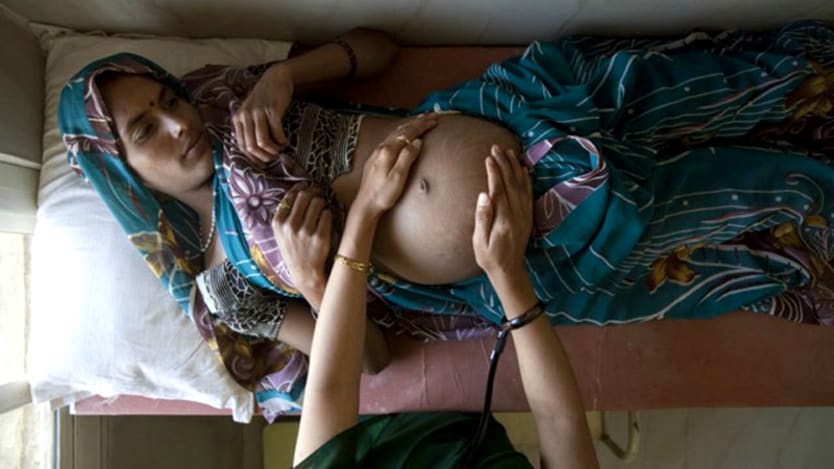
Few would argue against the old adage, prevention is better than cure. The 6 million child lives saved over the length of the Millennium Development Goals through the preventive powers of vaccines and malaria bed nets prove the importance of prevention.
But when it comes to newborn survival, the faith in prevention seems to evaporate. Some experts say the evidence is not strong enough and as a result the focus is on saving vulnerable newborns — a critical task — but one that simply won’t be enough to achieve the new Sustainable Development Goal of ending preventable newborn deaths in just 15 years.
Driving the current 2.8 million newborn deaths close to zero in every country, and tackling the estimated 2.6 million stillbirths, will require that health systems fire on all fronts: prevention, diagnosis and treatment.
This is what it took to reduce the AIDS and malaria epidemics to the levels required to achieve the MDG targets, and it is also the current strategy to reduce child pneumonia and diarrhea deaths. It’s working. UNICEF reports that since 2000, AIDS, malaria and diarrhea deaths among children have fallen by 60 percent and pneumonia deaths by 50 percent. In contrast, newborn deaths from sepsis only fell 23 percent.
As a result, newborn deaths now comprise almost 50 percent of all deaths among children under 5 and in some high burden countries like Bangladesh and Pakistan the rate is approaching 60 percent. Attempting to end deaths at this scale without a robust prevention arm would be like attempting to reduce deaths from diarrhea without clean water, sanitation and hygiene.
A large group of stakeholders led by the MDG Health Alliance, USAID’s Every Preemie — SCALE Program and the March of Dimes came together in 2014 to launch the Public Private Partnership to Prevent Preterm Birth. The partnership is charged with forging a prevention path in newborn survival to complement the current efforts to treat sick newborns.
The partnership’s goal is simple. It aims to demonstrate that preterm birth rates can be significantly reduced by addressing four “LINC” risk factors — lifestyle, infection, nutrition and contraception among populations of women where preterm birth rates and deaths are extremely high.
The strategy is to surround these women with support including comprehensive prenatal testing and treatment for chronic and infectious diseases, nutritional supplements and/or food vouchers to reduce anemia and underweight and modern contraception, while the men in their lives are supported to reduce tobacco smoking and curb violent behavior and provide more household support to their wives during pregnancy.
In a bold move, the government of Canada and Johnson & Johnson recently announced the first public-private partnership for preterm birth prevention with a $30 million investment in Bangladesh, Mali and Ethiopia. A consortium of nongovernmental organizations including World Vision Canada, Save the Children and Plan International will lead the program. More recently, CARE India announced their intention to implement a public-private partnership in northern India and efforts are underway to expand to Pakistan and Nigeria.
To support the development of these public-private partnerships, a committee of government, NGO, foundation and research leaders has come together to champion investments in the LINC Factors. The Global Steering Committee for Preventing Preterm Birth will ensure that programs are designed for impact, learnings are shared and the LINC Factors are championed among all development actors.
The recent progress in newborn survival is undeniable. The past three years have witnessed the Born Too Soon Report, the Every Newborn Action Plan, the world’s first global goal for newborn survival (SDG 3.2) and a new Global Strategy for Women’s, Children’s and Adolescents’ Health, which prioritizes action on newborn survival. But we have a long way to go to build wide recognition that reducing the burden of preterm deaths to the levels required for SDG achievement requires prevention, not just treatment.
Ultimately this message needs to be heard by the donor governments, country governments and foundations whose funding influences others. We need their commitment to experiment with ways to drive down preterm birth rates. The benefits of increased funding for preventing preterm birth should also improve maternal and all-cause newborn deaths and reduce stillbirths, delivering the much sought after “triple return” highlighted in the Every Newborn Action Plan.
Many years ago now, Jim Grant, the leading architect of the child survival revolution and legendary leader of UNICEF from 1980 to 1995, argued that in the great majority of countries — industrialized as well as developing — far too much emphasis is placed on cure rather than on prevention, with excessive reliance on medical facilities for improving health. His historic child survival campaign with its focus on growth monitoring, oral rehydration salts, breast-feeding and immunization (called “GOBI”) was an effort to shift the focus to prevention. It yielded extraordinary results. If investments in the LINC factors could achieve what GOBI did — 60, 70 and even 80 percent child death reductions — but this time for newborns, the world will have finally honored its promise to children.
To read additional content on global health, go to Focus On: Global Health in partnership with Johnson & Johnson.


